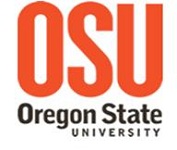- Dr. Stacey Harper received a five-year, $3.3 million award from the National Science Foundation to study the risks of micro- and nanoplastics to aquatic organisms in the pacific northwest.
- Dr. Stacey Harper received a five-year, $1.9 million award as an Outstanding New Environmental Scientist (ONES) from the National Institute of Environmental Health Sciences (NIEHS) and was selected as 2013 recipient of the L.L. Stewart Faculty Scholars Award which recognizes an outstanding faculty members at Oregon State University.
You are here
Comparative dissolution, uptake, and toxicity of zinc oxide particles in individual aquatic species and mixed populations.
| Title | Comparative dissolution, uptake, and toxicity of zinc oxide particles in individual aquatic species and mixed populations. |
| Publication Type | Journal Article |
| Year of Publication | 2019 |
| Authors | Wu F, Harper BJ, Harper SL |
| Journal | Environ Toxicol Chem |
| Volume | 38 |
| Issue | 3 |
| Pagination | 591-602 |
| Date Published | 2019 Mar |
| ISSN | 1552-8618 |
| Abstract | Potential differences in species susceptibility to nanoparticle (NP) contaminants make the use of multispecies community toxicity testing strategies beneficial in understanding NP risk to aquatic environments. Because of the limited knowledge of zinc oxide (ZnO) NP fate and toxicity, we conducted multispecies exposures and compared the responses of individual species to the same species in a community comprised of algae (Chlamydomonas reinhardtii), bacteria (Escherichia coli), crustaceans (Daphnia magna), and zebrafish (Danio rerio). Different-sized ZnO particles and ionic Zn were compared to investigate the contribution of particulate and dissolved Zn to aquatic organism toxicity. Each organism and community was exposed to Zn sources at 0.08, 0.8, and 8 mg Zn/L. The present results indicate that all 3 types of Zn elicited differential toxicity among test organisms, with stronger adverse outcomes observed in single species than within a community. The community assay (nanocosm) we developed increased resilience to all Zn exposures by 5 to 10% compared to individual exposures at equivalent concentrations. In addition, the uptake and toxicity of ZnO particles to aquatic communities appear to be driven by rapid dissolution and the concomitant impacts of zinc ion toxicity, and the size of the ZnO particles had little impact on uptake or toxicity. The nanocosm assay could be a useful screening tool for rapidly assessing the potential impacts of nanomaterials to aquatic species. Environ Toxicol Chem 2019;38:591-602. © 2019 The Authors. Environmental Toxicology and Chemistry published by Wiley Periodicals, Inc. on behalf of SETAC. |
| DOI | 10.1002/etc.4349 |
| Alternate Journal | Environ. Toxicol. Chem. |
| PubMed ID | 30615210 |
| Grant List | 1438165 / / National Science Foundation / ES017552 / / National Institutes of Health / P30 ES000210 / / National Institute of Environmental Health Sciences / |
Theme by Danetsoft and Danang Probo Sayekti inspired by Maksimer
